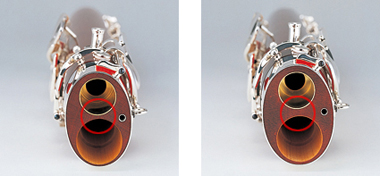Thanks to Shawn Seguin (SS) for helping to articulate and organize our thoughts and concepts
on this style of reed-making. Thanks to Eryn Oft for the encouragement to get this process
documented and shared with our whole community!
on this style of reed-making. Thanks to Eryn Oft for the encouragement to get this process
documented and shared with our whole community!
Step 1: Watch my YT video which is lengthy but also filled with a lot of information on each step of the finishing process.
Step 1: Watch my YT video which is lengthy but also filled with a lot of information on each step of the finishing process.
Step 2: Clip the tip - 31 mm from top wire
- SS - finished at 27 - 28, starting at 29 - 30, form tip, get general sense of intonation
- EC - clipping to adjust tuning, start at 29 mm from tip to top of wire, shorten as needed
Crow and play the reed on your bassoon right after you clip the tip - you’ll be surprised! Keep crowing and playing on your bassoon after each step (especially on your first several attempts) to best appreciate how quickly the vibrations are freed up. Also, by crowing and playing more frequently, you will avoid over thinning the tip. This is integral to the reed style which is generally thicker overall and in the ratio from the collar to the tip.
Step 3: Divide the reed into 3 equal sections:
- Zone 1 (tip) - overall response, pitch
- Zone 2 - “Feel of Reed,” mid-range clarity
- Zone 3 - Bottom octave response
Step 4: (in the video, I have combined steps 4 & 5 into 1 step - thinning Zone 1 as a whole) Release vibrations by removing cane from Zone 1 & Zone 2 channels (shaded area seen in picture)

- Crow the reed before and after you do this to feel how much difference taking cane from this very small area releases vibration.
- SS - “Feel of reed” is how much embouchure pressure is required at the point where your lips connect with the reed (Zone 2)
- When removing cane from Zone 2 channels keep in mind that you are not creating channels your are releasing vibration.
- This reed style is about vibration!
Step 5: Thin the tip (shaded area in pic, 1 mm in height) this the point of drop off and can be done several ways

- Sanding plank - hold the reed at a 45 degree angle and apply pressure to the middle of the tip to assist in evenly removing cane straight across
- Knife - moving straight across the tip, remove cane until you no longer hear the popping sound of the knife against plaque (or the popping is significantly less)
- File - straight across
Step 6: Thin Zone 1 with a superimposed “anchor” (drawn on reed in the YT video)
Center is the heaviest, rail next heaviest, bottom and center of rounded area is the thinnest

Step 7: Using a dial indicator, balance the aperture from center to rail and between blades, top and bottom
- (SS) Corners relate to the rail, not the tip, and should be thinned to create a taper from collar to tip in the rail
- (SS) Rail has a ratio to the spine
- We see the manifestation of a heavy rail at the tip, we address the manifestation (“warped tip”) by addressing the taper of the rail as a WHOLE
Step 8: Release final vibrations (third crow, bottom octave response)
- Removing cane from Zone 3, be sure to blend all the way off the tip
- Use less pressure (if using a file or sandpaper) as you approach the tip
- Avoid removing cane from the center of the tip
- Rotate the file out towards and off the corners
Step 9: Final adjustments
- Round the tube by crimping between the wires to darken the sound as need
- Clip the tip if pitch remains flat
- Sand down the rails if the sound is too wild
Step 10: Enjoy your new reed which (hopefully) finished relatively fast and easy!
I'm certain there is more I can include on this step-by-step manual. Please leave comments to let me know what is unclear so I can make updates. Happy reedmaking, friends!

























